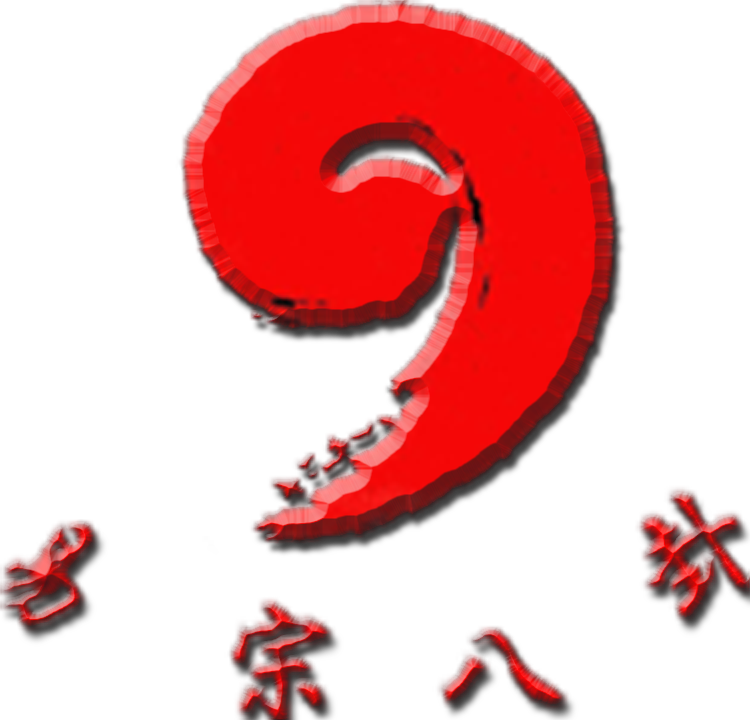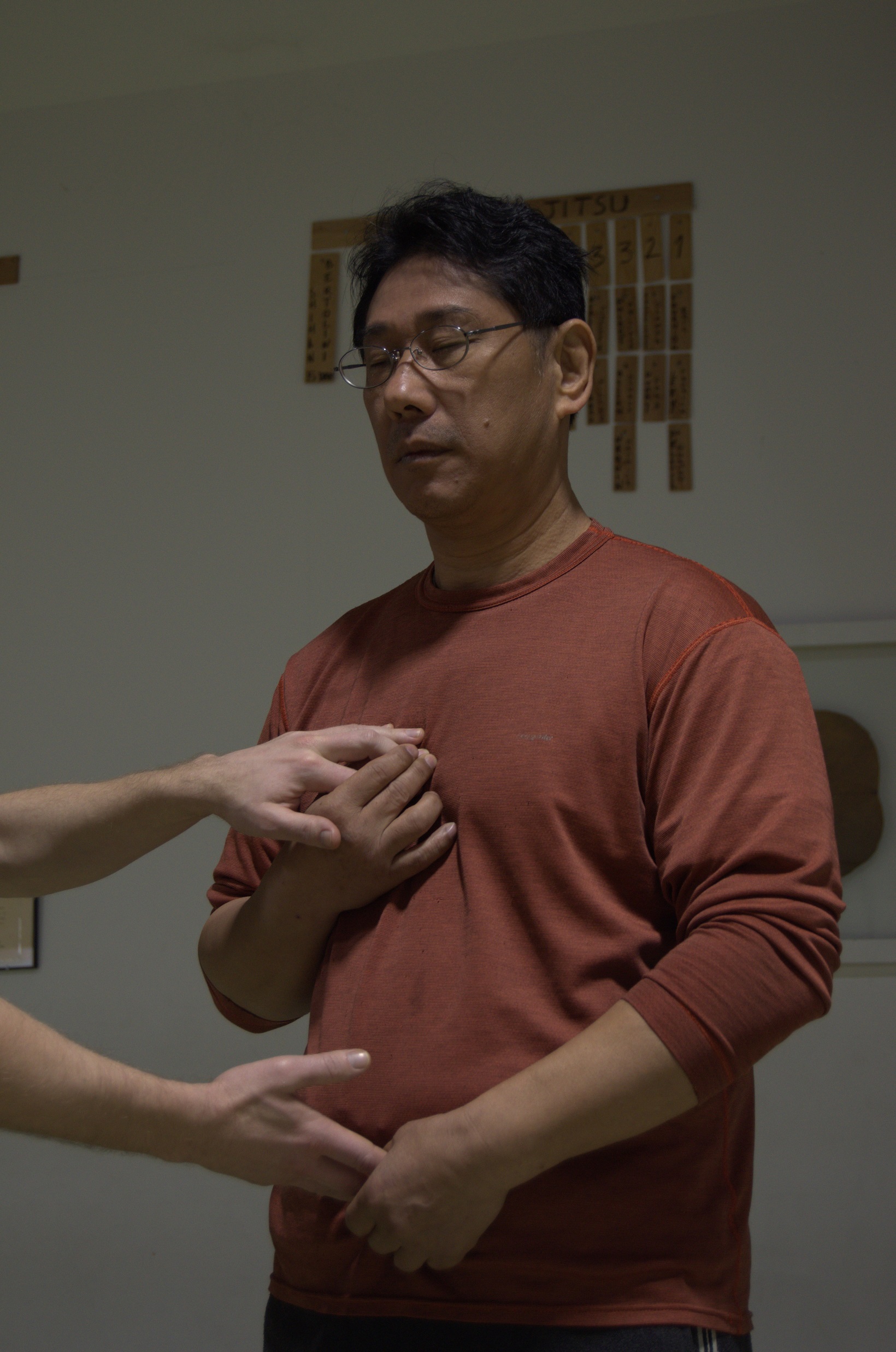UNDERSTANDING QI GONG
What is Qi Gong?
Practitioners of Qi Gong refer to Qi as “Internal Qi” (Nei Qi), “Innate Qi” (Yuan Qi), or “True Qi” (Zhen Qi). All these names already differ from the simple meaning “Breathing”.
Chinese people believe, that the Qi inside a human’s body, is the driving force for life. Therefore, the work with “Qi” as in “Qi Gong”, means to work with the "Nei Qi", "Yuan Qi", or "Zhen Qi".
“Gong” means “work” or “effort”. Chinese people often use the expression: “Xia Gongfu” (Put in time and energy). In Qi Gong practice, one uses his awareness in combination with physical movements and mental exercises. This kind of practice is not only of practical help for refining ones personality, self awareness and self control, but also helps get rid of ails and to maintain good health. Qi Gong is a science of health and long life. It is the work with “Innate Energy”, putting in time and effort to strengthen ones physical qualities.
To practice Qi Gong means to nourish your Innate Qi (YuanQi), and to use your intent to move it. The intent leads the Qi and helps it circulate within the meridians. This will stimulate and strengthen the rise and purification of the mind as well as of the internal organs. Through the proper circulation of Qi, one will nourish ones innate Qi, with the goal to heal the body from its ails and to maintain a vital state of mind.
Qi Gong is the work with human body’s Innate Qi (Yuan Qi). The Qi of the human body expresses itself in many different manifestations, but the most fundamental/primal Qi, is the so called Yuan Qi (Innate Qi) or Jing Qi (Essential Qi).
The Zhen Qi consists of two different kinds of Qi: The Qi that was given to us before we were born (Pre-natal Qi), and the Qi that we accumulate after birth and throughout our life (Post-natal Qi).
Xiantian Qi: Is the indicator of life’s starting point. It strengthens its functional power. It is the fundamental energy for all human activity (Preheaven’s original spirit).
Houtian Qi: the breath of inhalation and exhalation, Qi accumulated through food and through breathing. It is constantly accumulated and consumed in order to preserve life.
When practicing Qi Gong one must harmonize body, mind, and breath, in order to enter a certain condition. This condition is called Qi Gong Tai (Qi Gong Spirit). In our school we call it Ru Jing (enter stillness). After entering this level, the aim of practicing Qi Gong (Lian Gong), to supply the Zhen Qi (True Qi) or to support the Yuan Qi (Innate Qi) can be achieved.
This means:
- Entering a state of harmonizing the body
- Entering a state of harmonizing the breath
- Entering a state of harmonizing the mind
In actual practice it is most important to adjust spirit and breathing. Especially the adjustment of the spirit is from utmost importance, since both (adjusting the body and adjusting the Breath) depend on the spirit to manifest. At the same time, all three of them are interrelated and dependent on each other.
The Principles of the Three Adjustments:
- a. The Principle of Adjusting the Body --- Relaxation
No matter which kind of exercise, all have their set requests concerning their physical posture. “Relaxation” of the body describes a natural way of relaxation. The idea is to be relaxed without loosing your internal structure, to let go without being lax, and to be solid without getting stiff. - b. The Principle of Adjusting the Breath --- Balance
“Breath” describes the process of breathing in and out. While practicing breathing we seek for balance. Out of this natural balance, the breath should become deep, long, gentle (fine), and even. - c. Adjusting the Spirit
Adjusting the “spirit” (Tiao Shen), or “Adjusting the mind”, describes methods to nourish and purify spirit, consciousness, and thought. The adjustment of body and breath both rely on the foundation of the spirit. To “focus” is an important method. It describes the process of moderating one”s attention. Attention is used to “enter stillness”. When the spirit is pure, the breath balanced, and the mind tranquil and peaceful, all internal organs become settled and work together in harmony.
The process of adjusting the spirit has to major procedures. First, one must focus. Second, one must “enter stillness”.
From within one’s practice, when one’s mental state is adjusted and one’s physiological state is adjusted, then the state of the vital spirit will adjust.
“Entering Stillness”
Entering Stillness means to minimize mental activity, to reduce the respond of the mind to outside stimulations. Getting rid of disturbing influences and distracting thoughts.
The level of “Stillness”, depends on the “depth” of ones gongfu.
In the beginning level one starts with soothing ones mind and regulating the breath. When the emotions become settled, and the spirit gets more and more focused, distracting thoughts can eventually be eliminated.
On a more advanced level, a purification of thought can be achieved. Mind and breath will be harmonized and the intent properly aligned.
On the deeper levels of “entering stillness” one will become aware of true stillness and emptiness. It will be as if entering into a state of emptiness, with oneself floating through a selfless realm.
Focus
The term “intent” in QiGong practice describes the human subjective consciousness. In the process of practicing Gongfu, one will focus ones intent on certain things, or on certain parts of the body as well as on pressure points.
Through the continuous elimination of distracting thought, one will deepen the level of “stillness”. Through a more quiet level of practice, one will experience different physical sensations. Like the effect of the “Qi Gan” (the awareness of energy in ones body), or the reactions of the body to internal Qi movement. Resulting from that, and through further adjustment, one will deepen the level of quietness, and gather and nourish ones True Qi (Zhen Qi). (“Entering stillness” and “focus of intent” are interdependent processes. One is required in order to bring out the other.)
Depending on the intensity of physical movement, Qi Gong practice can be separated into JingGong (Motionless Practice), and DongGong (Practice in Motion).
Depending on the method of practice, the exercises can be done walking, sitting, lying or standing.
During the practice we need to gather and use human body’s internal elements Jing (Essence), Qi (Internal Energy) and Shen (Spirit).
What is “Jing”?
“Jing” is the basis in the creation of human life and activity. It is the most essential and important factor in the growth and development of the human body.
In a broader meaning, "Jing" consists of "pre-natal jing" (the essence that was given us from our parents), and of "post-natal jing" (the energy that we gain from nutrition). The "jing" of the internal organs (hormons) and the "jing" of the kidneys (breeding system), having the use of reproduction.
Therefore it is a factor that was there before the creation of the human body, wish is nourished later by food and nutritional factors. Through the process of physical life, the amount of “jing” inside ones body will continuously be consumed and therefore needs continuous supplement and nourishment.
What is Qi?
In China, the term “Qi” is used in many variations. For example in the meaning of “weather” (TianQi). Or in the meaning of factors that cause illness (XieQi). Also the human body’s innate energy, with the ability create life and to resist diseases (Yuan Qi). The Energy that is derived from digested food is called (ShiQi)
In general, we can divide Qi into “Pre- natal Qi” and “Post- natal Qi”. As said before, this is called Yuan Qi (Innate Qi). It is given us through our parents, and describes the driving force for development and growth of the human body, as well as the fundamental energy for all internal processes.
The so called “Post- natal Qi” is the Qi that is gathered through breathing and the digestion of food. “YingQi” is the energy gained by nutrition, it follows the circle of blood and liquids through the body. Its function is to stimulate the blood flow and to nourish the whole body.
The so called “WeiQi” helps to nourish and warm inner and outer body parts, and not only protects muscle and skin, but also has the function of resisting bad outer influences.
In practice we say “through the harmonization of yin and yang, is the manifestation of Qi”. So what is the meaning of yin and yang? There are two different meanings:
- 1. (Qi is) The resonance that is created through a certain state of balance between sympathetic nerve system (yang) and parasympathetic nerve system (yin).
- 2. Qi is created trough a certain balance between nerve system and blood system. Most of the times, Qi Gong is confused with Breathing, or the state of mind reaching a certain level where it can stimulate a certain kind of physiological potential. This state is called “Ru Jing”. But just through a further deepening and preservation one will enter the state of Jing Ding (maintaining stillness) and receive the full benefits of practice.
What is “shen”?
All aspects of human life can be grouped under the name “shen”. It includes spirit, thought, feelings, attention and awareness. “Shen” is created by Pre- natal Jing. With the creation of the embryo, “shen” develops.
“Shen” is created before birth, but it relies on nourishment and supplementation in life. Only if the internal organs work properly, a lively “shen” can be achieved.
“Shen” in QiGong Practice means a humans spiritual awareness, and the manifestation of internal “jing” on the outside.
Some important factors for the practice of Qi Gong:
- One should prepare himself for practice
- One should stay focused during practice
- One should end the practice properly, collecting and gathering Qi inside ones body.



